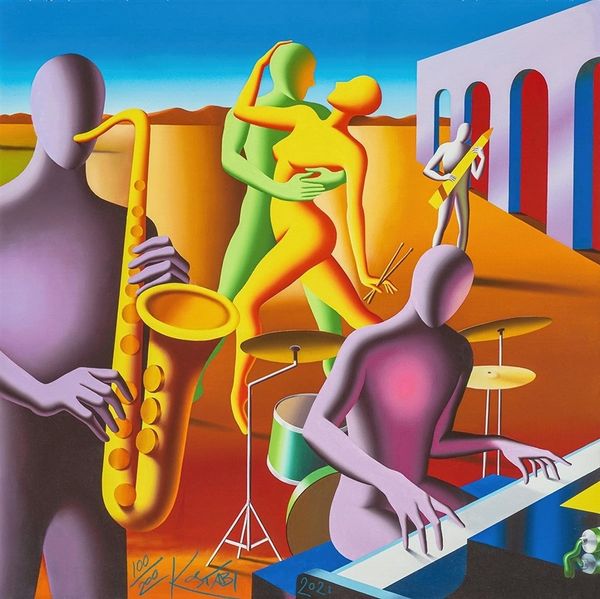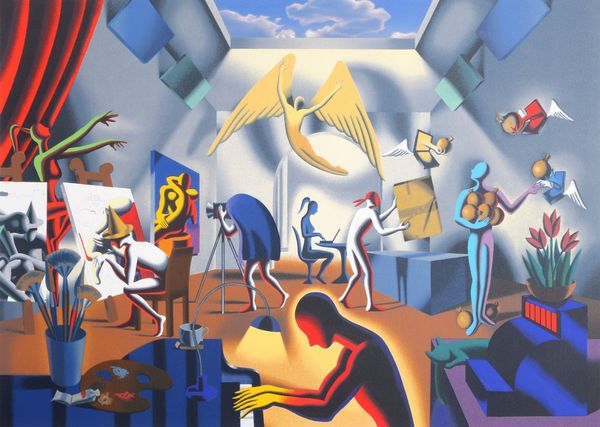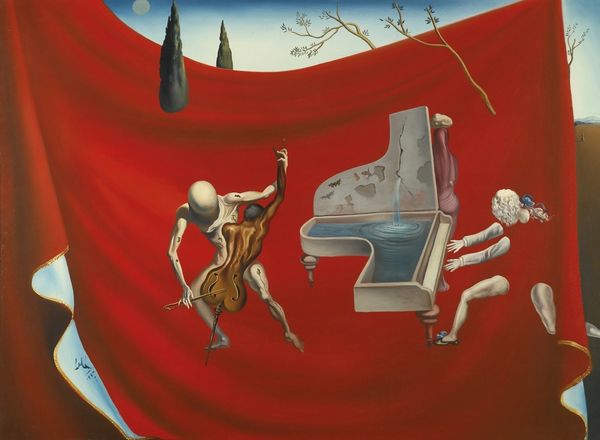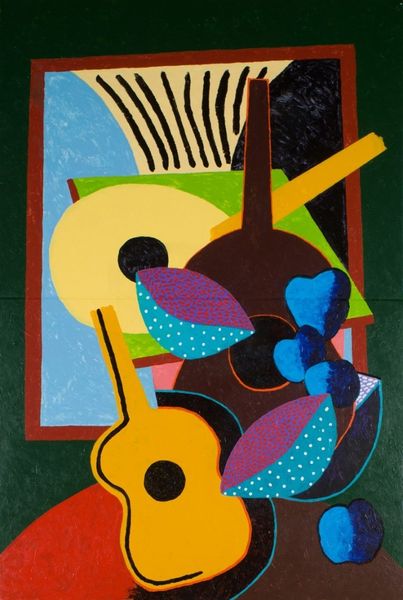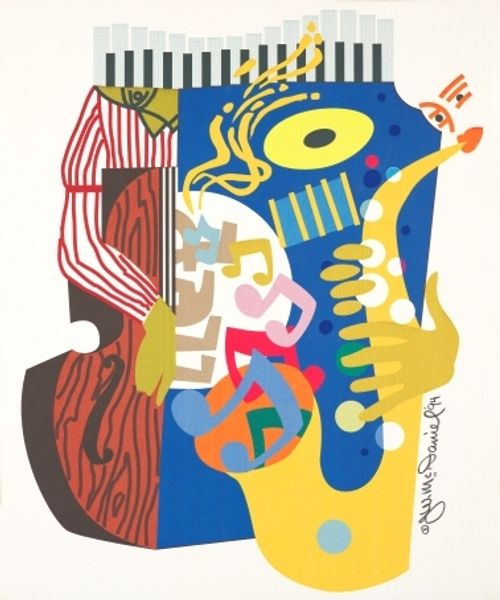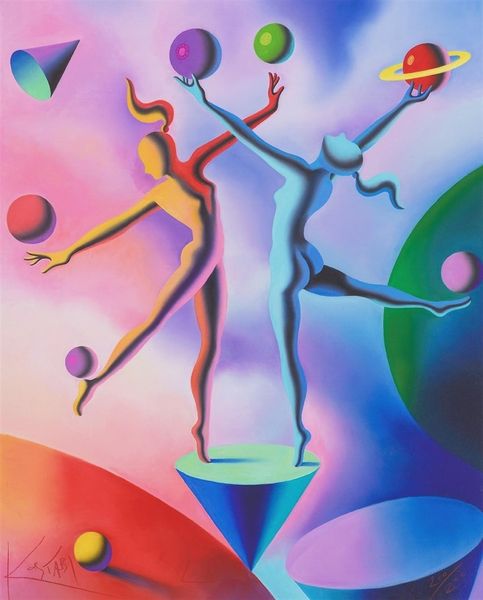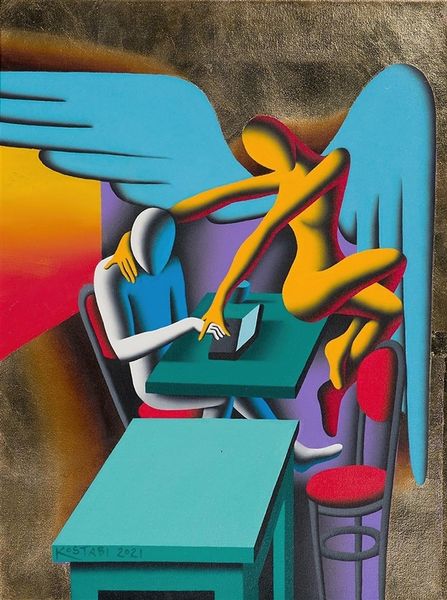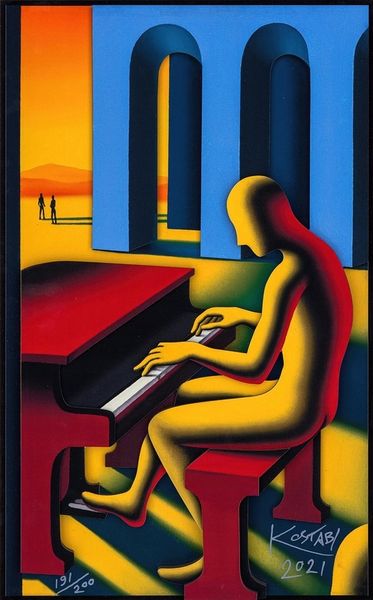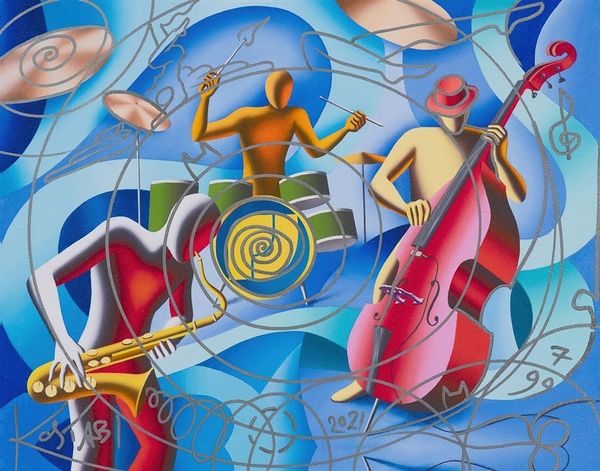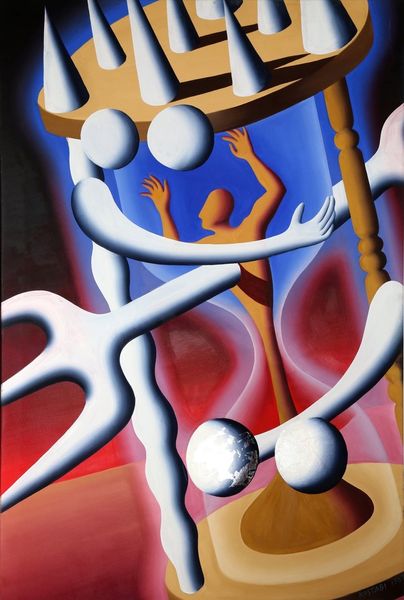
Copyright: Modern Artists: Artvee
Curator: Let’s take a look at Mark Kostabi's 2021 acrylic on canvas, "Putting a Face on The Note". My first reaction is surprise. It's so cool, figuratively and literally! I get a strong sense of the uncanny. Editor: Yes, I see that. The smoothed, mannequin-like figures certainly contribute to that feeling. What grabs my attention, beyond the eerie mood, is Kostabi’s manipulation of artistic labor. Note how the figures, almost assembly-line products, are creating art themselves: music and, seemingly, more paintings floating overhead. Curator: And it's the creation itself that’s put into question here. The flat planes and geometric rendering clash wonderfully with the representational forms of the musical instruments and figures. You know, this reminds me of the ideas surrounding production techniques—how they affect value, perception, reception... Editor: Exactly! These elements of flatness and the seeming mass production aesthetics question the aura of originality and authenticity we often project onto art, and the role of artmaking as work in general. Consider how Kostabi himself was so interested in art as a collaborative act, and he’s pushing us to recognize artistic production as inherently social and materially dependent. Curator: That connects strongly to labor indeed, how value is not intrinsic but socially produced through those means! Editor: I also notice that all figures seem androgynous and devoid of typical identifying features. They become representative, then, perhaps emblematic of everyone, anyone—especially in their capacity as workers and consumers. The notes being ‘faced’ or embodied could perhaps represent art that challenges the dominant power dynamics that influence all walks of life? Curator: Perhaps! What strikes me too are the almost neon acrylic hues. Kostabi used paint efficiently: the tones look almost flat despite the smoothness he's achieved—like layers on a screenprint, emphasizing flatness over dimensionality while using representational content to soften the message. It challenges our perception of fine art versus, say, advertising. Editor: That’s very astute. For me, the power here is the blending, that pushing against boundaries in production to say art is valid everywhere it's found in every place. Curator: Indeed, the piece is a challenge to reconcile these ideas and it invites discussion.
Comments
No comments
Be the first to comment and join the conversation on the ultimate creative platform.
